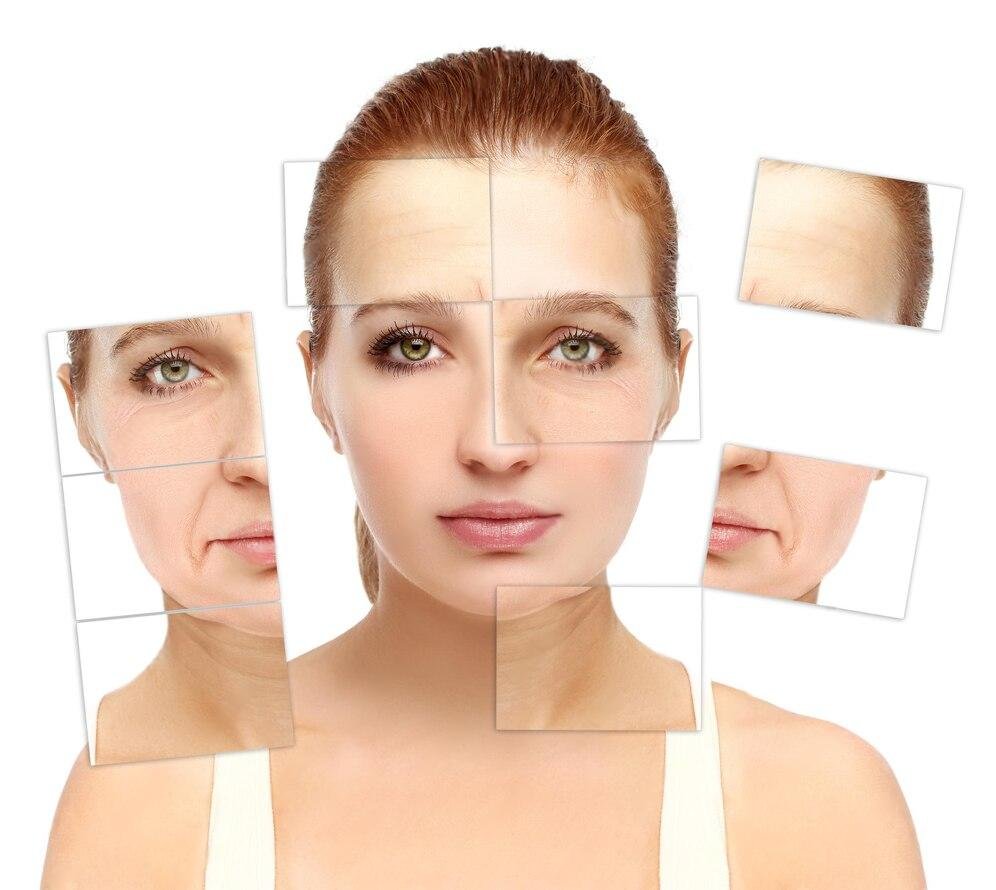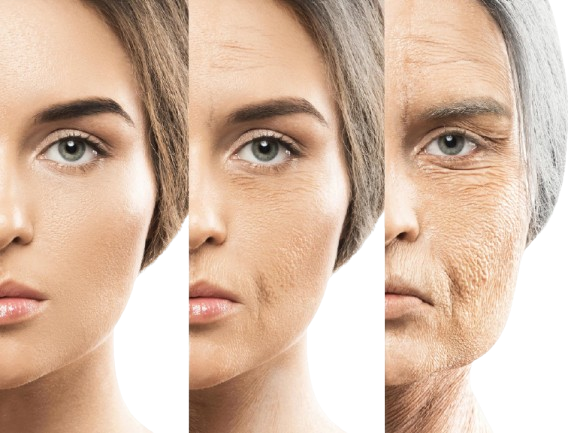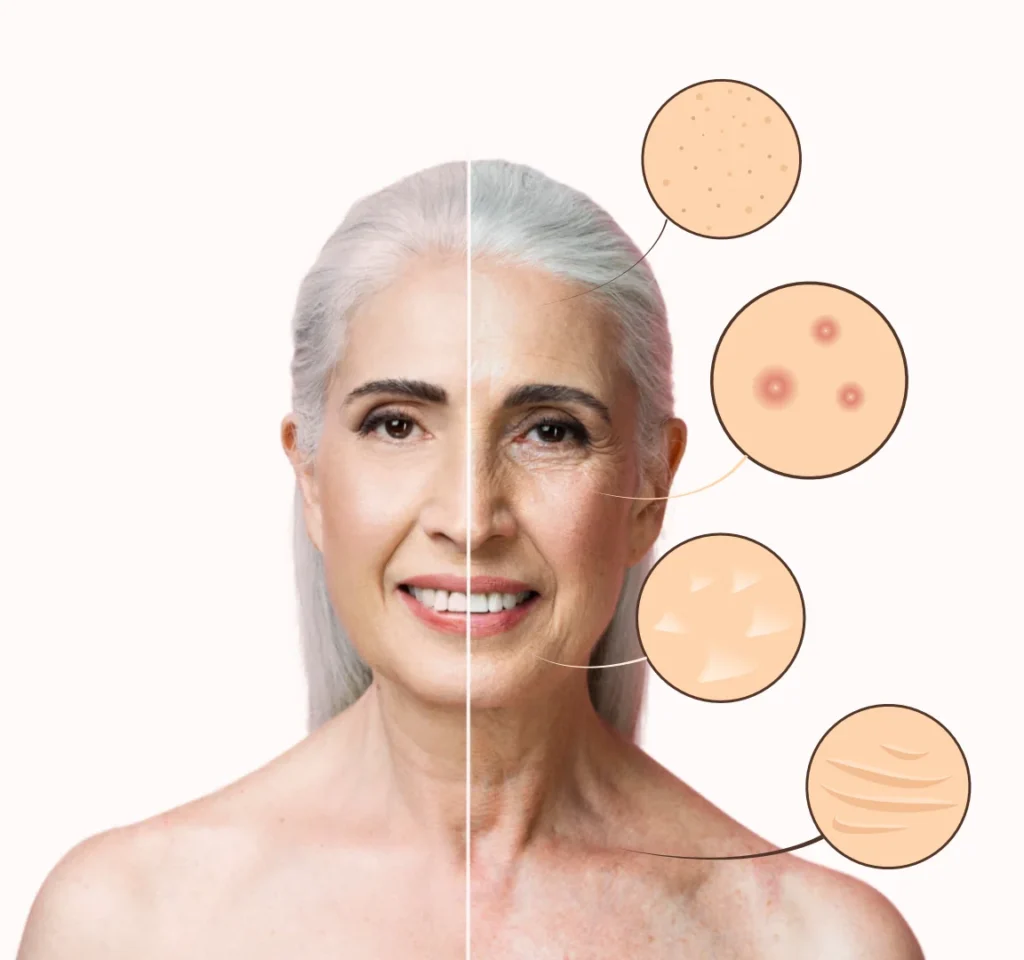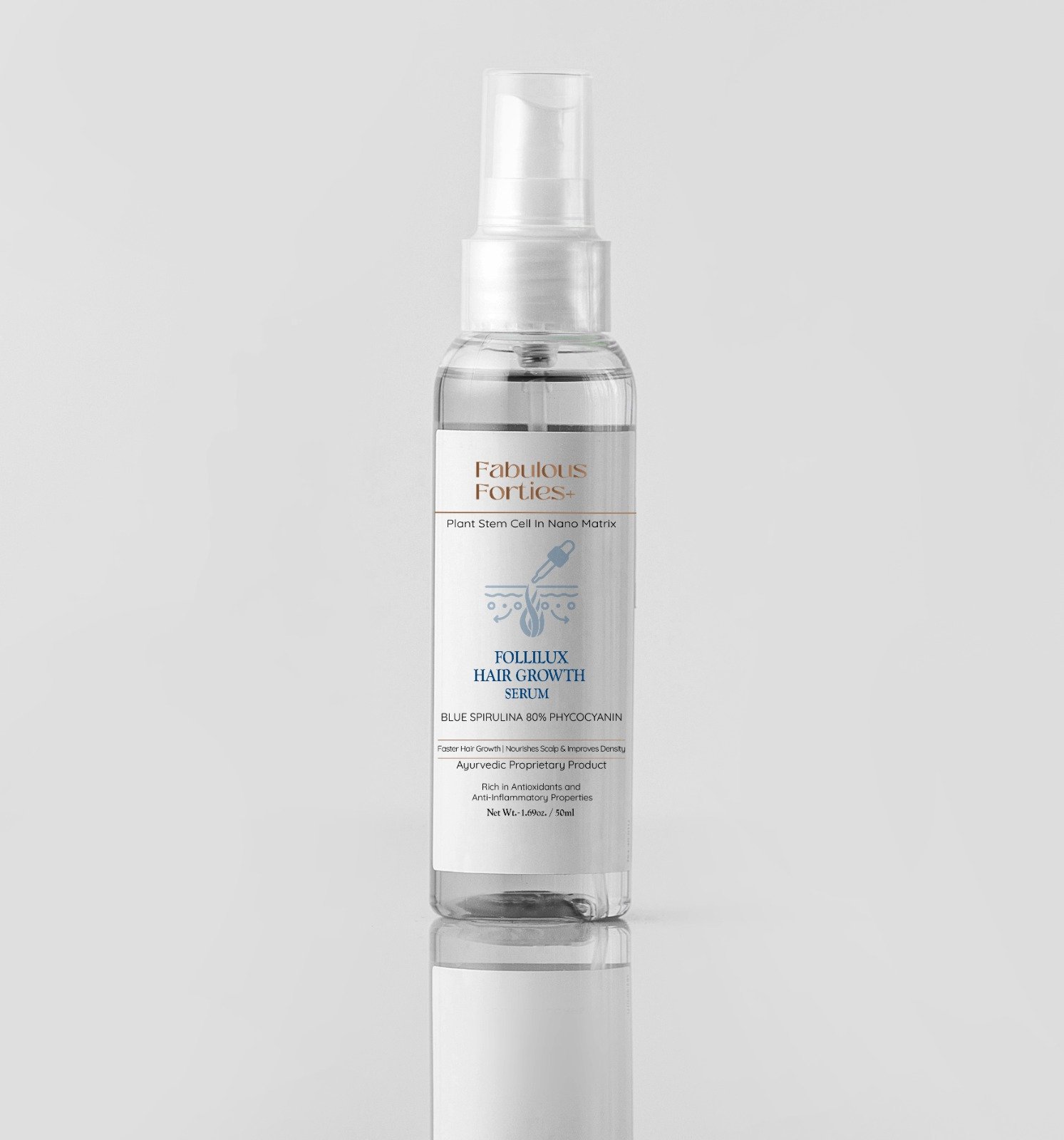Why Internal Care Matters After 40
Internal care for women 40+ is a targeted approach, acknowledging hormonal fluctuations, shifting energy levels, and the increased need for specific nutrients to maintain optimal health and a thriving life. It’s about empowering women to proactively address the challenges of aging and embrace this chapter with confidence and vitality.
Why and how we age?

The human body is designed for a planned aging process with the ovaries and testes starting to stop functioning in the late 40s. Women go through menopause. Once women hit menopause, they rapidly experienced noticeable changes such as their nose and ears lengthening, eyes appearing smaller, and faces becoming flatter due to loss of fat and thinning of the skin. This accelerated process continued until age 60, after which the changes over time were less drastic.
Aging acceleration is due to the loss of the sex hormone estrogen after menopause. Estrogen has significant effects on the protein collagen, which is what gives skin its elasticity, and causes bone to be re-absorbed, which has an effect on the chin and cheekbones.
Aging means flatter face, sagging skin, deeper lines between the nose and corner of the mouth, smaller visible areas of the eyes, thinner lips, and a longer nose and ears.
Our genetic material, DNA, is constantly being damaged by external and internal factors. These damaging factors include UV radiation from sunlight or reactive oxygen species produced in our mitochondria. It is estimated that our DNA is damaged up to a million times a day. Most of this damage is repaired immediately because cells have efficient detection and repair mechanisms. However, these repair processes are not perfect and a small percentage of damage remains unrepaired. This is why DNA damage accumulates as we age, which can have several adverse effects.
Aging acceleration is due to the loss of the sex hormone estrogen after menopause. Estrogen has significant effects on the protein collagen, which is what gives skin its elasticity, and causes bone to be re-absorbed, which has an effect on the chin and cheekbones.
Aging means flatter face, sagging skin, deeper lines between the nose and corner of the mouth, smaller visible areas of the eyes, thinner lips, and a longer nose and ears.
Our genetic material, DNA, is constantly being damaged by external and internal factors. These damaging factors include UV radiation from sunlight or reactive oxygen species produced in our mitochondria. It is estimated that our DNA is damaged up to a million times a day. Most of this damage is repaired immediately because cells have efficient detection and repair mechanisms. However, these repair processes are not perfect and a small percentage of damage remains unrepaired. This is why DNA damage accumulates as we age, which can have several adverse effects.
Telomeres are the protective caps at the ends of the chromosomes in the human genome. They are like the closed end of a shoelace and keep our chromosomes intact. Each time a cell divides, a piece of telomere is lost, so the more cells divide and the older we get, the shorter the chromosome ends become. When a certain length is reached, cells enter a resting phase and stop dividing. These cells can then die or even cause inflammation, which accelerates the ageing process and triggers disease.
Our genome consists of more than 3 billion letters, called nucleotide base pairs, which encode the blueprint of our body. However, the information in the DNA is not only stored in the base pairs, but also in chemical modifications to these letters and to the histone proteins that package our DNA. The sum of these chemical modifications is known as the epigenome. Unlike the genetically encoded information, which is very stable, the epigenome is very dynamic and changes in response to diet, drugs or stress, allowing the cell to adapt to environmental changes. The epigenome also changes with age.
Our genome consists of more than 3 billion letters, called nucleotide base pairs, which encode the blueprint of our body. However, the information in the DNA is not only stored in the base pairs, but also in chemical modifications to these letters and to the histone proteins that package our DNA. The sum of these chemical modifications is known as the epigenome. Unlike the genetically encoded information, which is very stable, the epigenome is very dynamic and changes in response to diet, drugs or stress, allowing the cell to adapt to environmental changes. The epigenome also changes with age.


Proteins are the most important molecules in our cells, catalysing most biochemical reactions and being important for cell signalling and stability. For cells to function properly, proteins must be kept in good condition, a process known as protein homeostasis, or proteostasis for short. To maintain proteostasis, cells have several systems that regulate protein synthesis, folding and degradation. Misfolded and damaged proteins are mainly degraded by the proteasome or by a recycling process called autophagy. The ageing process is characterised by a loss of proteostasis leading to an accumulation of damaged and non-functional proteins. Loss of nutrients will also lead to ageing.
Mitochondria are also the main source of reactive oxygen species (ROS), which are produced as a by-product of mitochondrial respiration. These free radicals can damage other macromolecules such as DNA, lipids and proteins and are therefore potentially harmful to the cell. For a long time, ROS were thought to be the main culprits in the ageing process.
Stress or the accumulation of damage over time can cause cells to enter a state called cellular senescence. Senescent cells stop dividing, lose their original function and begin to release harmful molecules, including inflammatory cytokines, growth factors and other molecules. There are several triggers for cellular senescence, including telomere shortening, DNA damage or mitochondrial dysfunction.
Mitochondria are also the main source of reactive oxygen species (ROS), which are produced as a by-product of mitochondrial respiration. These free radicals can damage other macromolecules such as DNA, lipids and proteins and are therefore potentially harmful to the cell. For a long time, ROS were thought to be the main culprits in the ageing process.
Stress or the accumulation of damage over time can cause cells to enter a state called cellular senescence. Senescent cells stop dividing, lose their original function and begin to release harmful molecules, including inflammatory cytokines, growth factors and other molecules. There are several triggers for cellular senescence, including telomere shortening, DNA damage or mitochondrial dysfunction.
Most cells in our body lose the ability to divide when they reach their final identity, such as a nerve cell or skin cell. Therefore, most organs rely on stem cells to repair tissue damage or to promote tissue renewal. Stem cells have the ability to divide and differentiate into different cell types. They play a vital role in keeping our organs and body healthy. Ageing negatively affects stem cells in many ways, and stem cell ageing itself is thought to contribute to tissue ageing, especially in tissues where cells renew frequently. Stem cells can be lost during ageing, leading to stem cell depletion and a reduced ability to repair organ damage.
The cells and organs in our body do not age in isolation, but communicate with each other via hormones, cytokines and metabolic products. That this intercellular communication plays an important role in the ageing process.
Autophagy is a kind of recycling system in human cells. It is the body’s way of breaking down unwanted and diseased cell components and recycling them elsewhere. There is strong evidence that autophagy is involved in the ageing process. In addition, genetic inhibition of autophagy accelerates ageing in model organisms. This could be due to an increased accumulation of proteins and cellular components, but also to a reduced ability to degrade pathogens. There is also ample evidence that stimulating autophagy increases lifespan and longevity in model organisms, highlighting the importance of autophagy in the ageing process.
The cells and organs in our body do not age in isolation, but communicate with each other via hormones, cytokines and metabolic products. That this intercellular communication plays an important role in the ageing process.
Autophagy is a kind of recycling system in human cells. It is the body’s way of breaking down unwanted and diseased cell components and recycling them elsewhere. There is strong evidence that autophagy is involved in the ageing process. In addition, genetic inhibition of autophagy accelerates ageing in model organisms. This could be due to an increased accumulation of proteins and cellular components, but also to a reduced ability to degrade pathogens. There is also ample evidence that stimulating autophagy increases lifespan and longevity in model organisms, highlighting the importance of autophagy in the ageing process.

Ageing is characterised by an increase in inflammation, also known as ‘inflammaging’. In young people, inflammation is usually a direct response to injury and is switched off once the injury has healed. However, chronic low-level inflammation often occurs in ageing tissues, causing tissue damage and being implicated in the development of age-related diseases such as obesity and type 2 diabetes. Directly targeting inflammatory pathways can rejuvenate tissue and improve survival.
The human body is colonised by a large number of microorganisms, including bacteria, fungi, protists and viruses, collectively known as the microbiome. It is estimated that for every human cell there is at least one non-human cell in our bodies.
Microorganisms live on our skin and in our body fluids, but the majority are found in our digestive tract and are therefore referred to as the gut microbiome. The gut microbiome has important functions for our bodies: microorganisms help digest food, produce essential vitamins, shape our immune system and help fight off pathogens. The composition of the gut microbiome is dynamic and depends on environmental factors such as diet and stress. It also changes with age.
The human body is colonised by a large number of microorganisms, including bacteria, fungi, protists and viruses, collectively known as the microbiome. It is estimated that for every human cell there is at least one non-human cell in our bodies.
Microorganisms live on our skin and in our body fluids, but the majority are found in our digestive tract and are therefore referred to as the gut microbiome. The gut microbiome has important functions for our bodies: microorganisms help digest food, produce essential vitamins, shape our immune system and help fight off pathogens. The composition of the gut microbiome is dynamic and depends on environmental factors such as diet and stress. It also changes with age.
